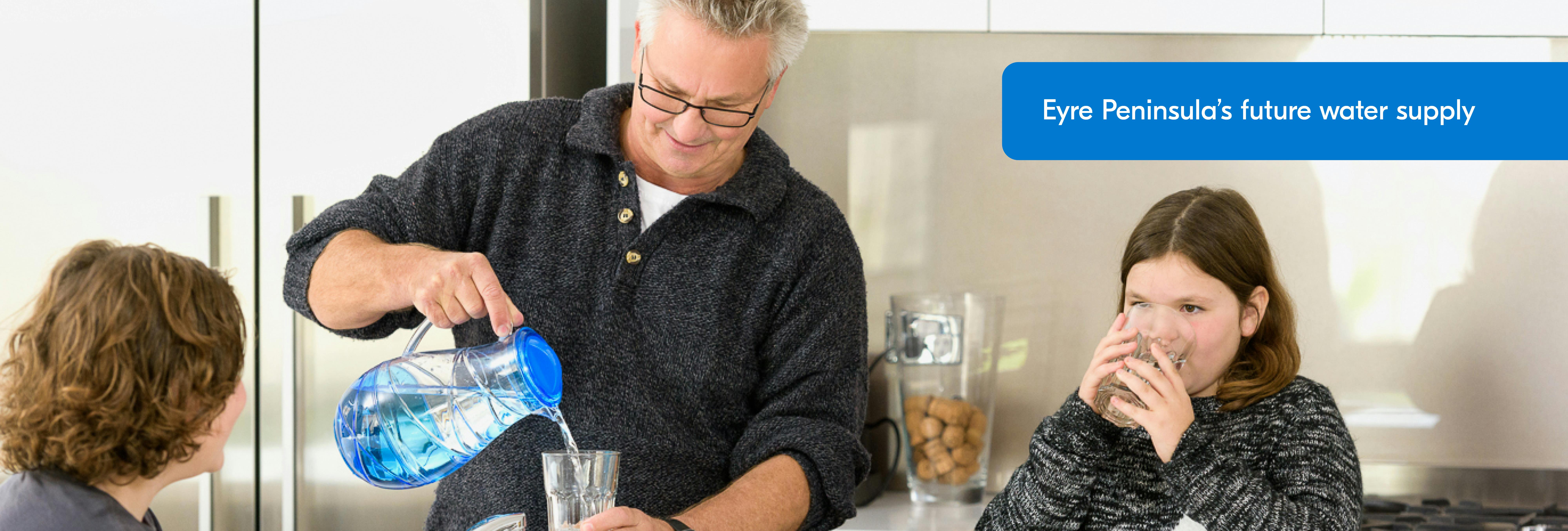Marine science and the environment
The research
The proposed desalination plant requires a licence to operate from the Environment Protection Authority (EPA), which will only be granted if the plant can meet strict conditions assessed against ongoing monitoring of the local marine environment, including through construction and operation stages. Any discharge (including of chemicals associated with the desalination process) from the plant also needs to meet EPA requirements, and approval will only be granted if we can show that the discharge poses no risk to the receiving environment.
Any chemicals discharged from the desalination plant will be neutralised and many are already present in seawater, with the exception of anti-scalant. Anti-scalant is used to clean reverse osmosis membranes and is commonly used and approved across Australia for discharge from desalination plants into marine environments.
The marine environment of Boston and Proper Bays, off the coast of Billy Lights Point, has been continuously monitored and modelled since September 2021, with research findings peer-reviewed and validated by an independent Marine Science Review Panel consisting of internationally recognised experts.
Marine Science Review Panel
| Role/Advice Area | Member | Organisation |
|---|---|---|
| Chair | Dr Don Plowman | Former Deputy CE, PIRSA, and former Executive Director, SARDI |
| Ecology | Prof Sean Connell | School of Biological Sciences, University of Adelaide |
| Ecotoxicology | Dr Anu Kumar | CSIRO |
| Environmental Engineering | Dr Ian Wallis | Consulting Environmental Engineers |
| Marine Ecosystems | Dr Beth Fulton | CSIRO |
| Oceanographer | Dr John Luick | Austides Consulting |
In 2022, the panel reviewed the following marine science reports:
- Oceanographic monitoring and far-field modelling to inform desalination in Boston Bay – Dr Mark Doubell and Dr Charles James, SARDI
- Marine Characterisation of Water Quality at Billy Lights Point and Point Boston, Port Lincoln – James Paterson, SA Water
- Desalination Ecotoxicity Review – Dr Andy Markham and Dr Ross Smith, Hydrobiology
- Boston Bay Marine Habitat Video Analysis – James Brook, J Diversity Pty Ltd
The panel supported the research outcomes and recommendations, and advised that a desalination plant at Billy Lights Point can be constructed and operated without negatively impacting the marine environment if the intake and outfall structures are designed to the existing marine conditions.
The Marine Science Review Panel will continue to provide specialist advice throughout the detailed design and development application phase of the project, and through the establishment of operational monitoring programs.
SARDI far-field modelling
Using a five-year model hindcast, the South Australian Research and Development Institute (SARDI) modelled predictions of the far-field salinity differences between a 12 GL per year desalination plant operating at full capacity and a model simulation with no desalination. The model showed a maximum seasonally-averaged salinity anomaly of 0.44 PSU within 250 to 500 metres of outfalls. This anomaly is equivalent to a 1.2 per cent change in the ambient salinity. Maximum seasonally-averaged anomalies were reduced to less than 0.1 PSU (equivalent to less than 0.3 per cent change in the ambient salinity) at distances greater than 1 km from outfalls. Modelling a 12 GL per year desalination plant was an ultraconservative approach, as this is more than double the initial capacity of 5.3 GL per year and 50 per cent larger than the proposed 8 GL per year ultimate capacity of the plant.
This animation of the 5-year hindcast model shows daily bottom salinity distributions for model scenarios with and without desalination, and at each outfall location.
S0 = no desalination plant — BL = Billy Lights Point — BLX = Billy Lights Point extended outfall
PB = Point Boston — PBX = Point Boston extended outfall — CD = Cape Donington.
Salinity levels
The wider potential impacts on salinity in Boston and Proper Bays from the long-term operation of the desalination plant have been modelled by SARDI. Tidal data shows saline discharge falling well within natural background salinity levels after mixing, and therefore remaining well below the ANZECC & ARMCANZ water quality guidelines relating to changes in salinity.
Modelling of the diffuser’s near- and far-field discharge zones will continue during detailed design, construction, and operation. Validation monitoring and reporting to regulators to ensure key environmental criteria are met would form part of our licence conditions.
Through considered design of discharge diffusers, pipeline length, and outfall location, the desalination plant at Billy Lights Point would meet the minimum dilution standard by the time saline discharge meets the seabed under all conditions, including dodge tides.
Impact on mussel spat from intake
Mussels are broadcast spawners, with millions of larvae released by the female. Extraction of water by any marine system will remove particles, including larvae and spat. This currently occurs with various existing operations in Boston and Proper Bays drawing in seawater and, to date, there has been no known impact on mussel production and farming.
During the detailed design phase, habitat mapping studies and particle tracking modelling will help to identify which areas are more sensitive in relation to the intake pipe. At Billy Lights Point, fewer than 0.1 per cent of the particles in the water, such as larvae, are at risk of coming within a 25m zone around the intake pipe.
As the design for the plant progresses, we will continue to work with industry and marine specialists to optimise the intake location and ensure it is not located adjacent to an area where large numbers of mussels are likely to occur.



